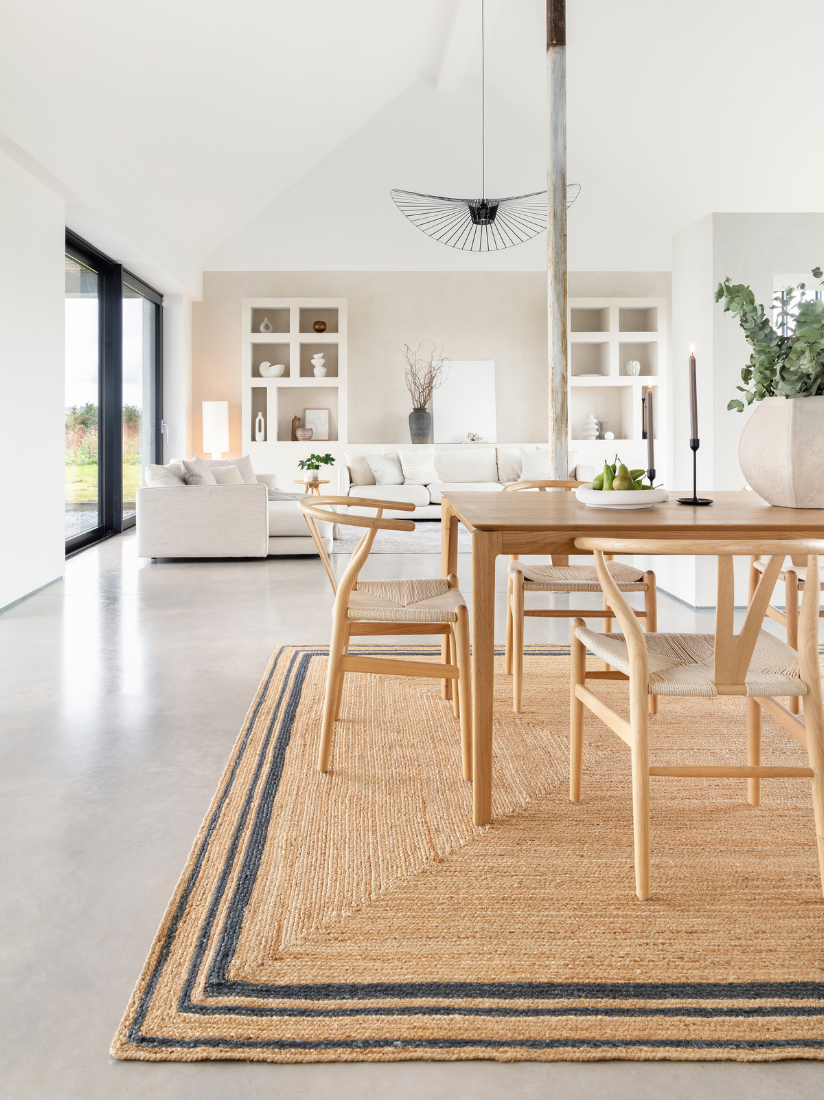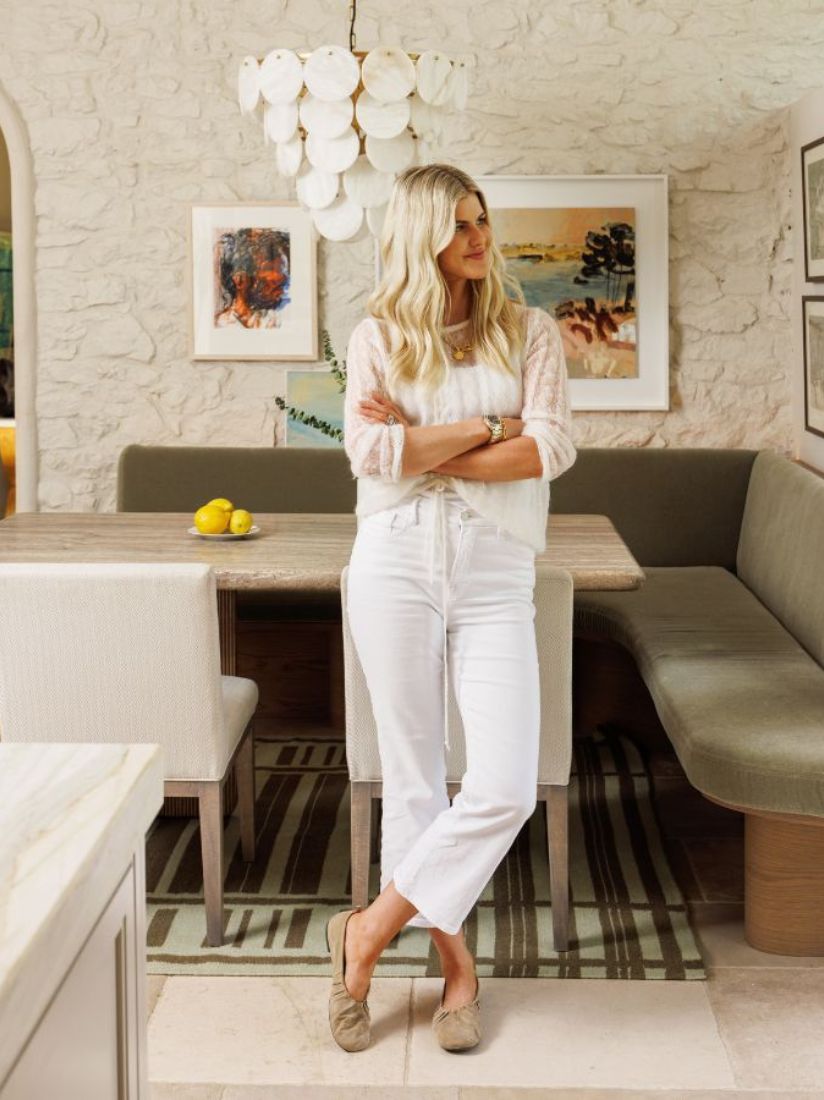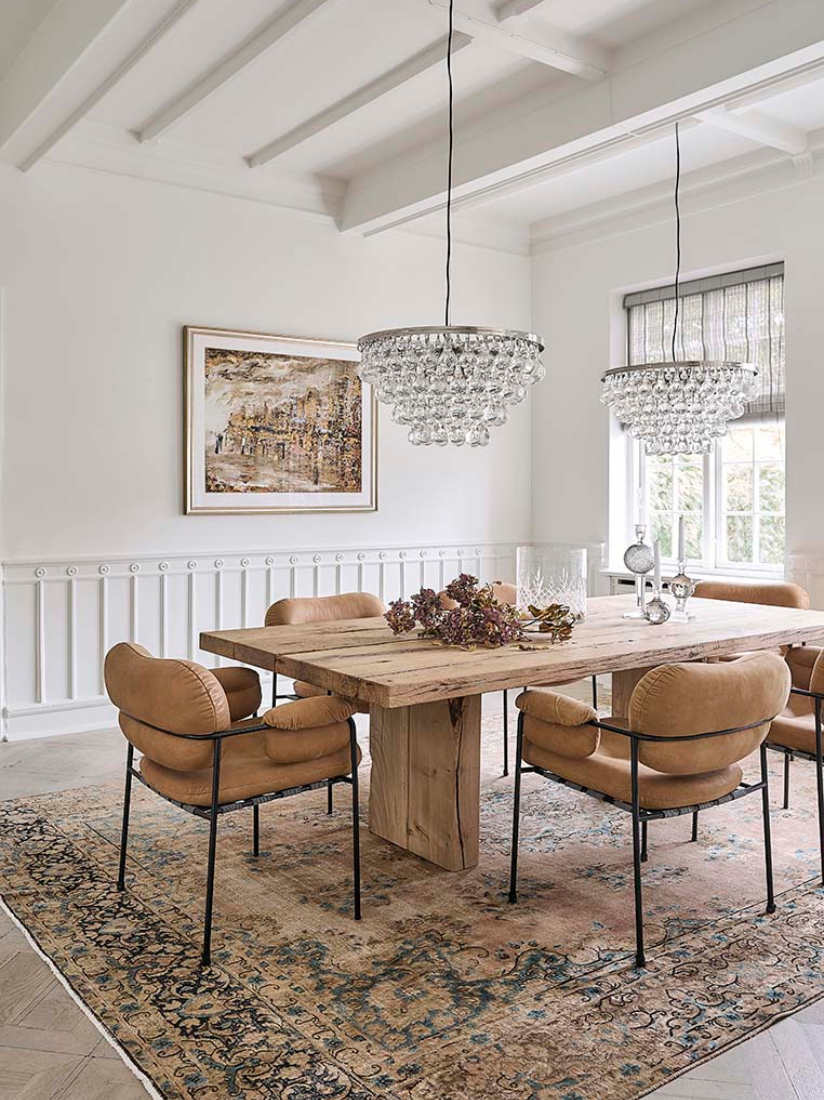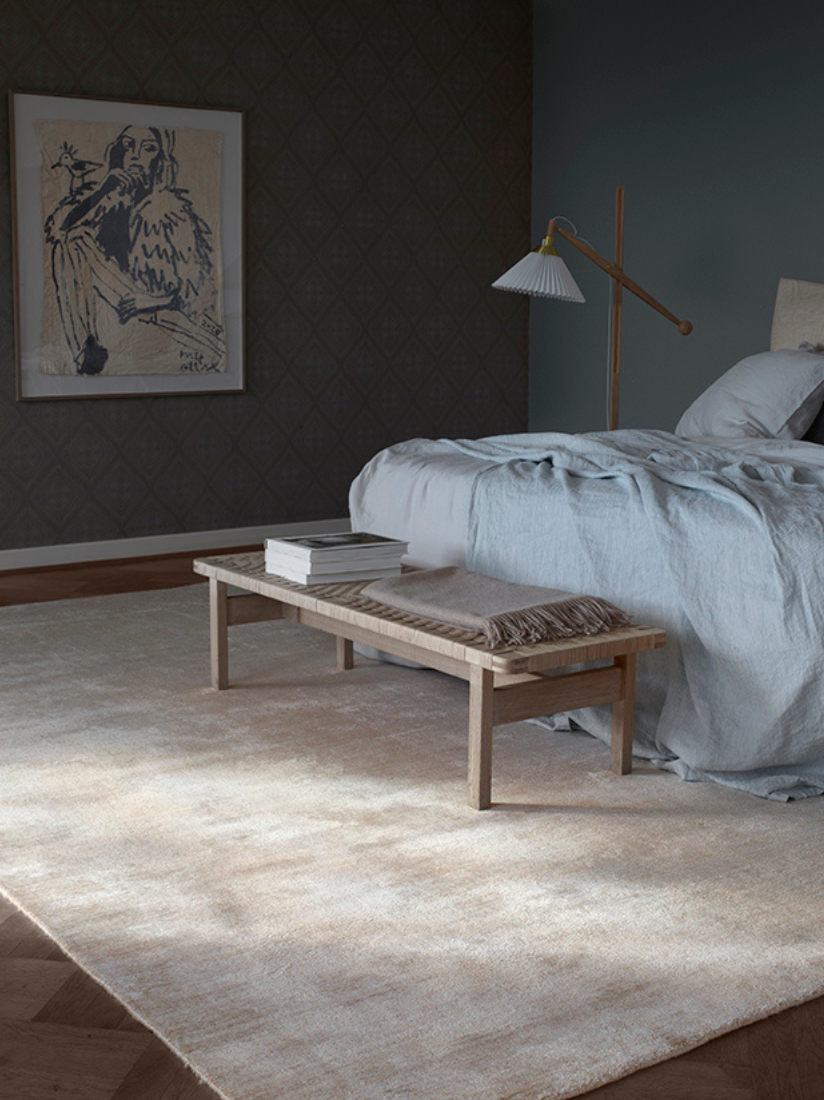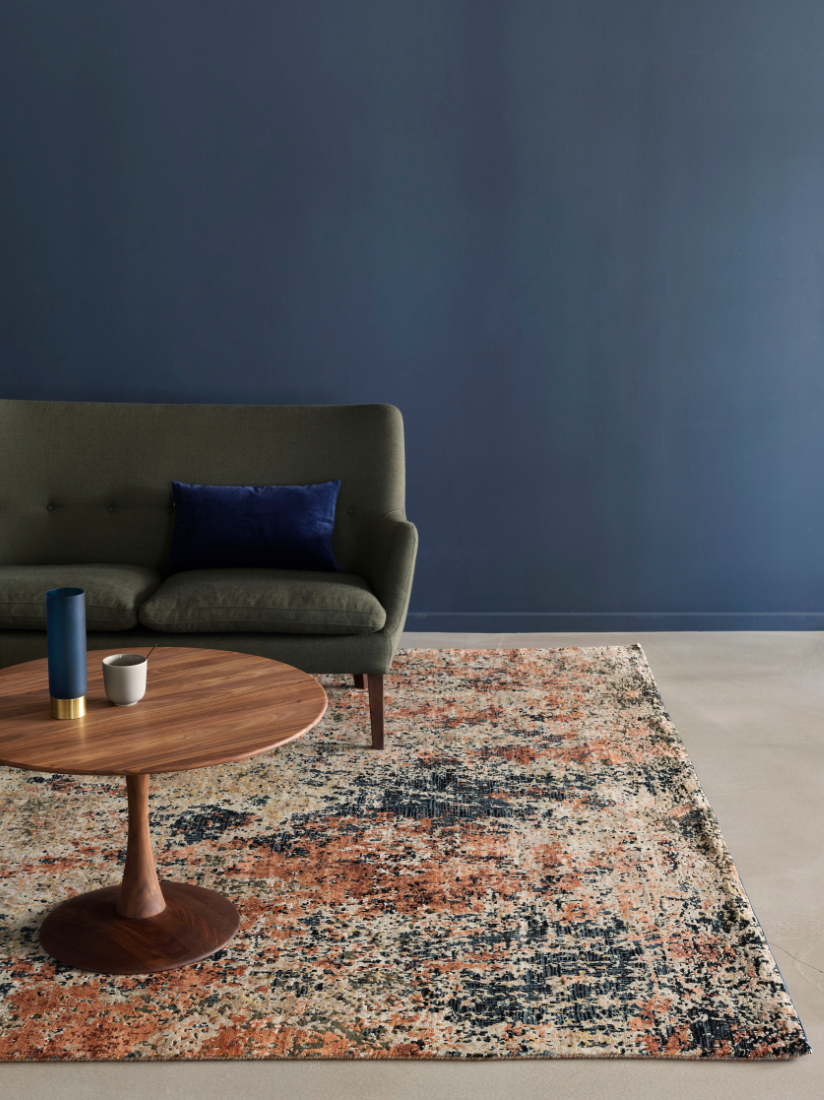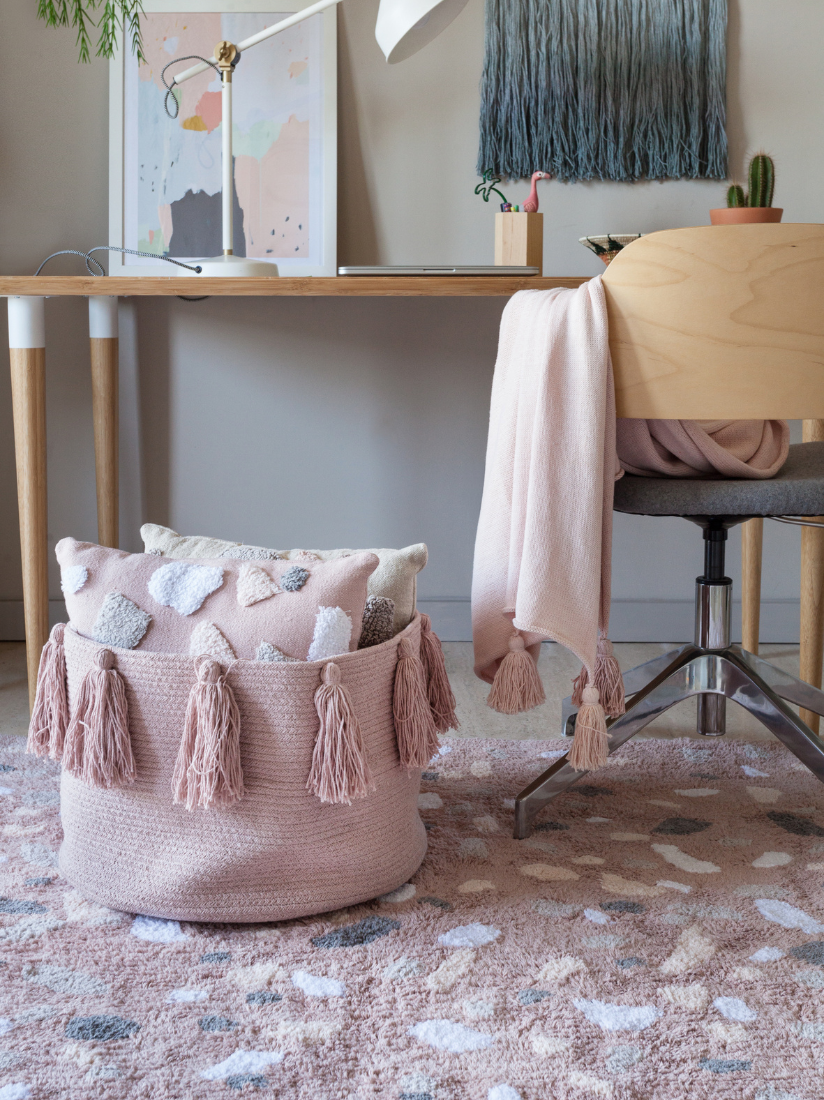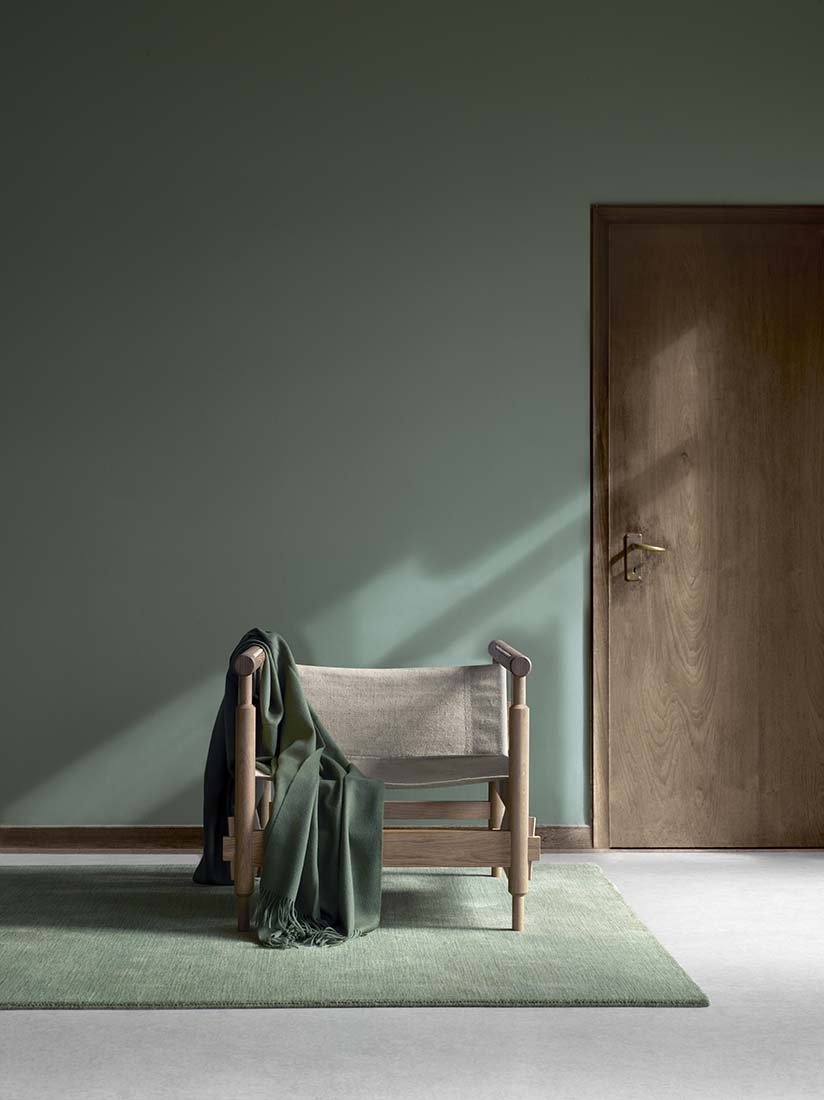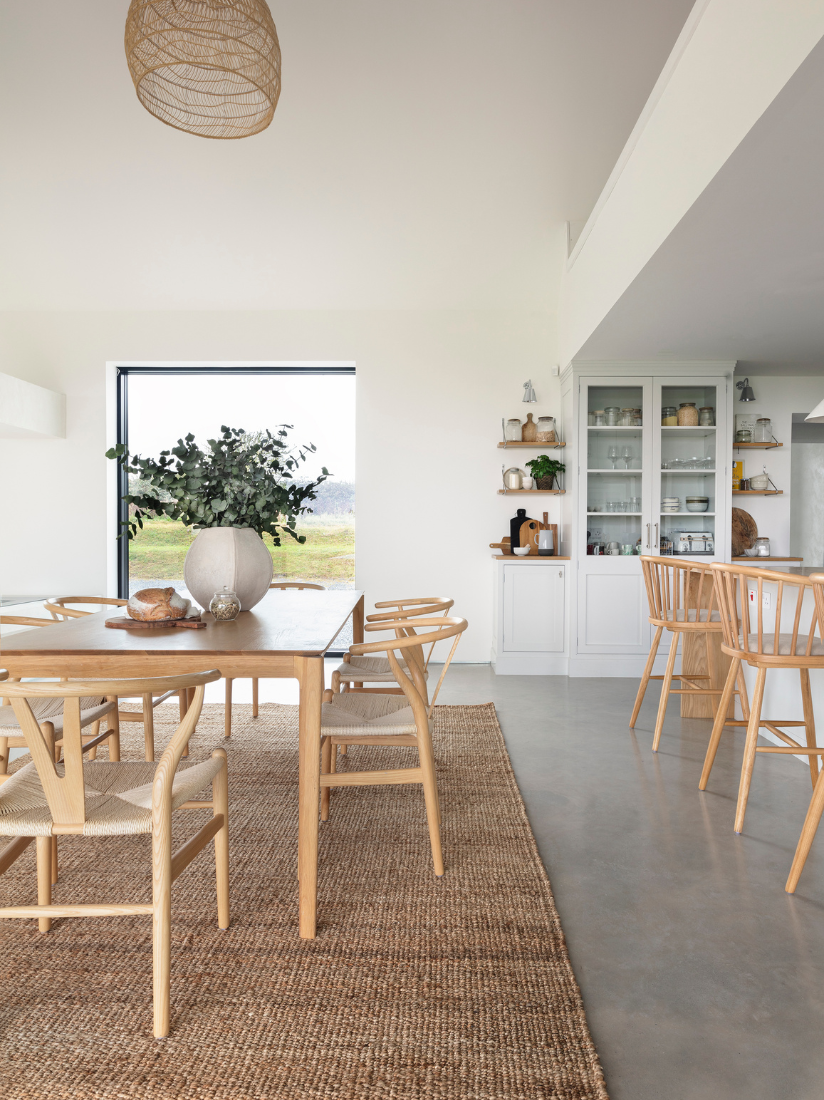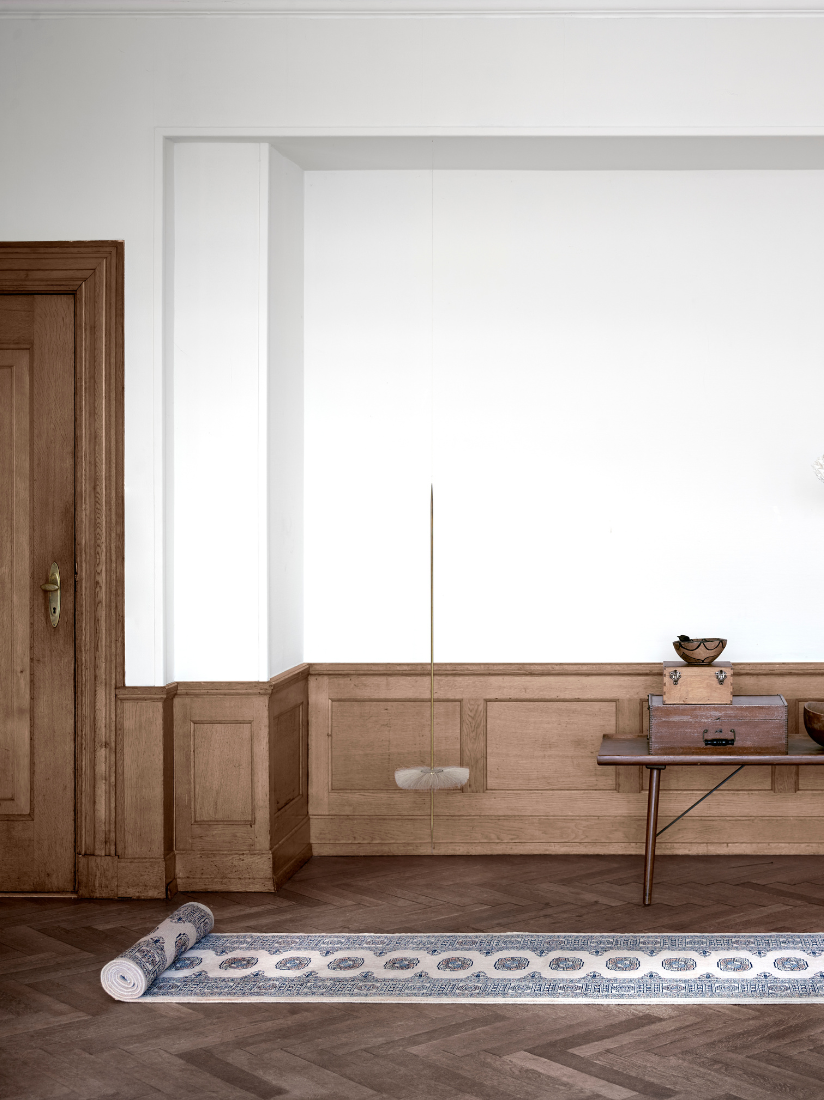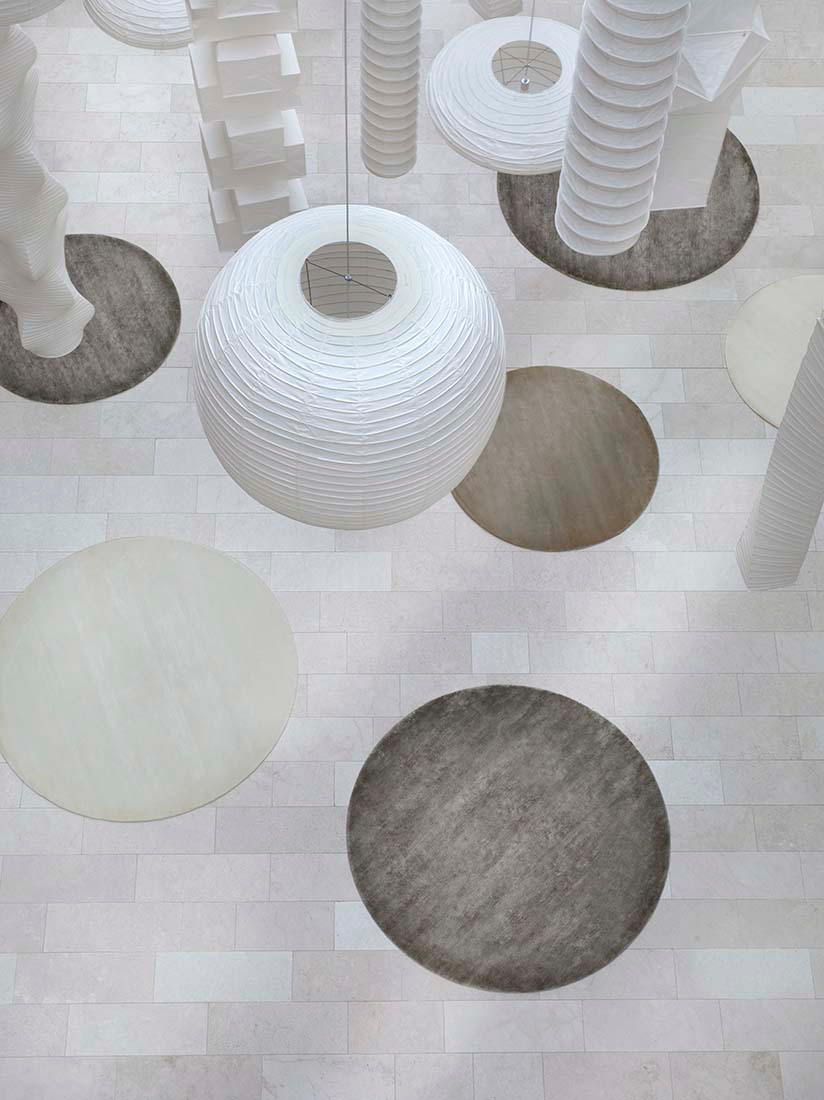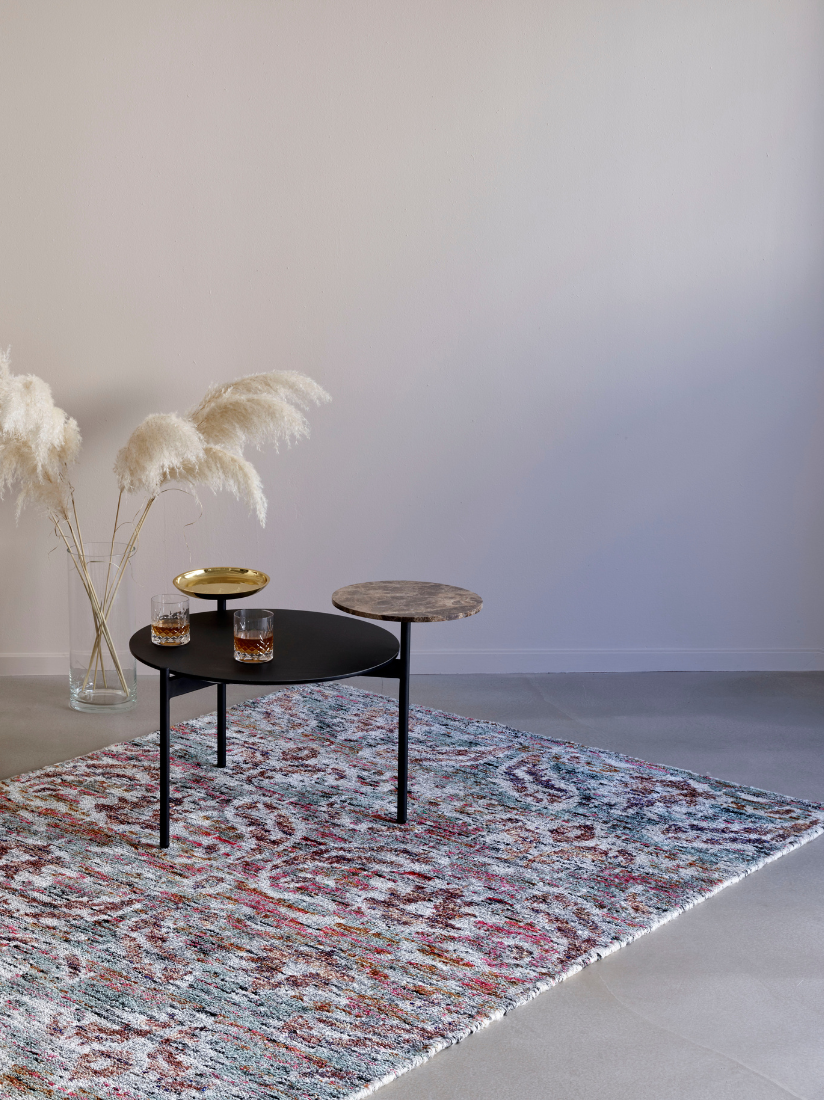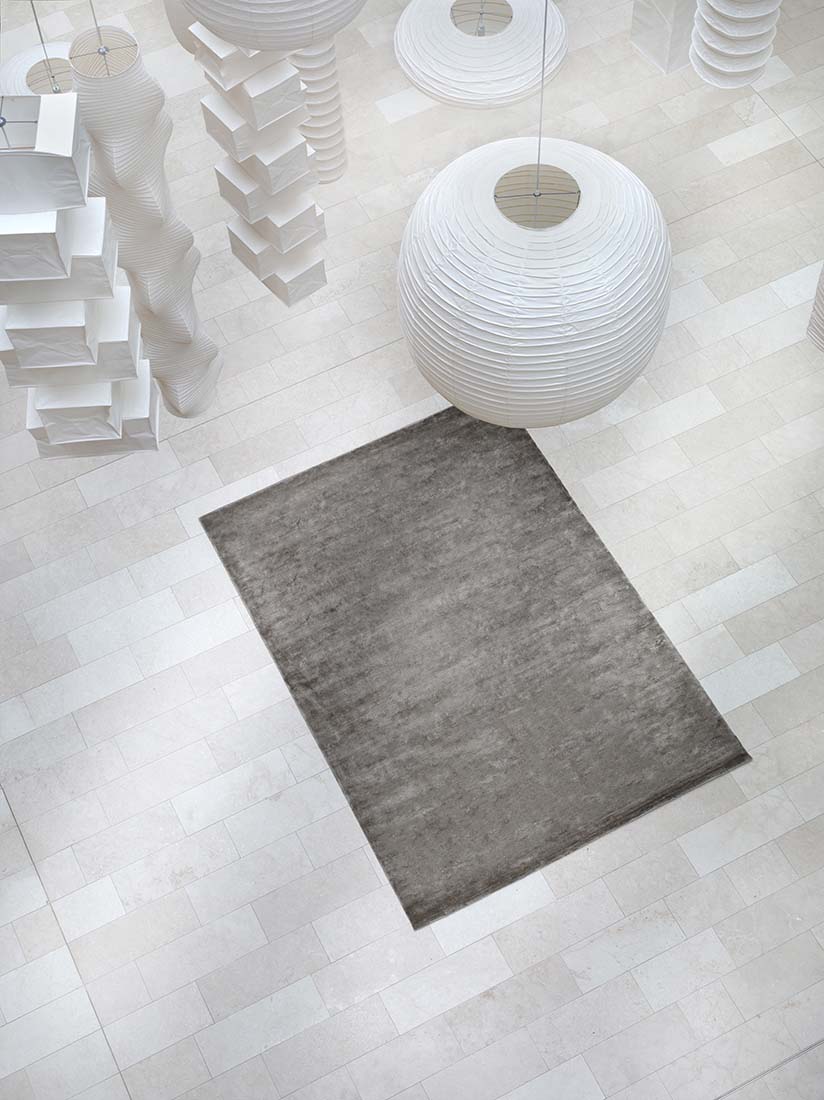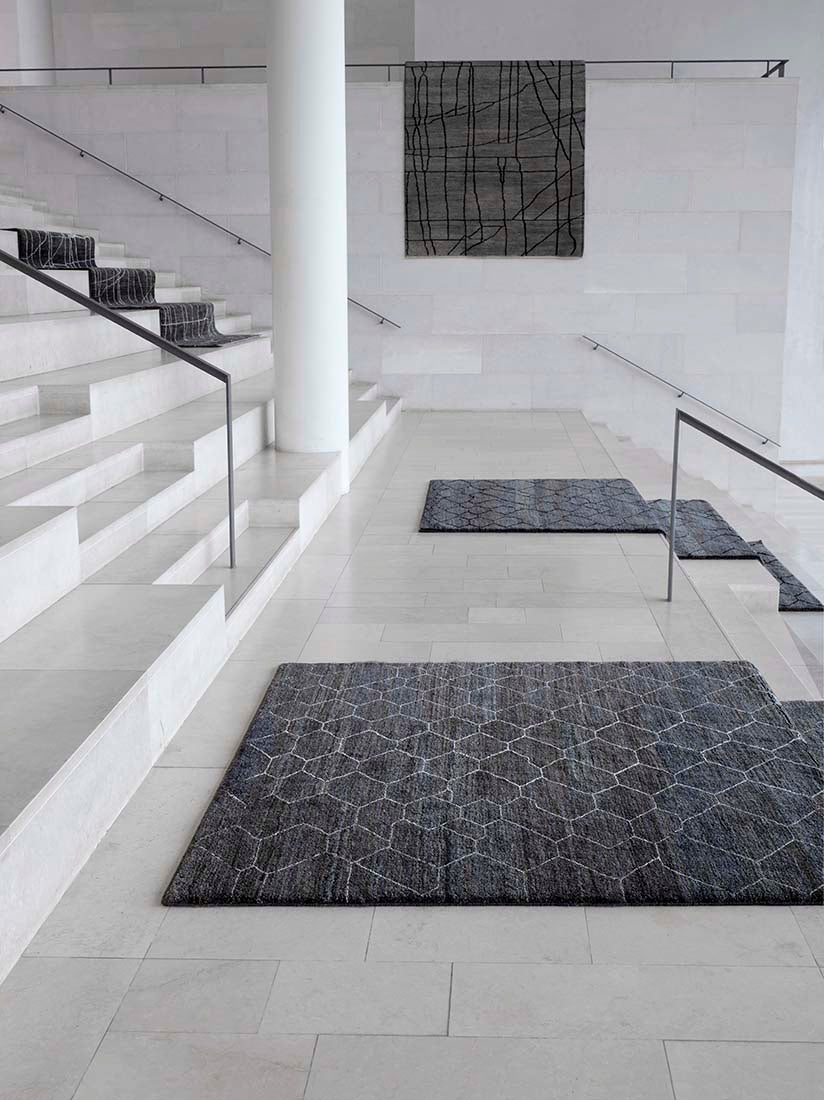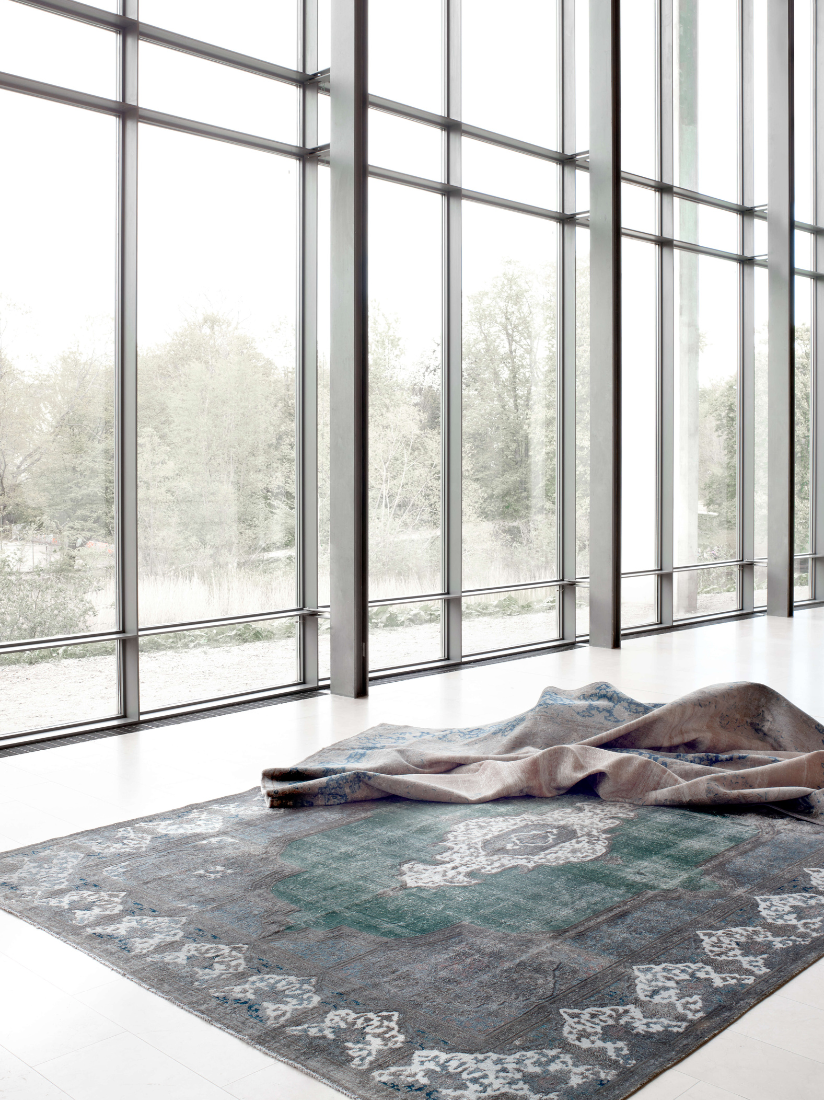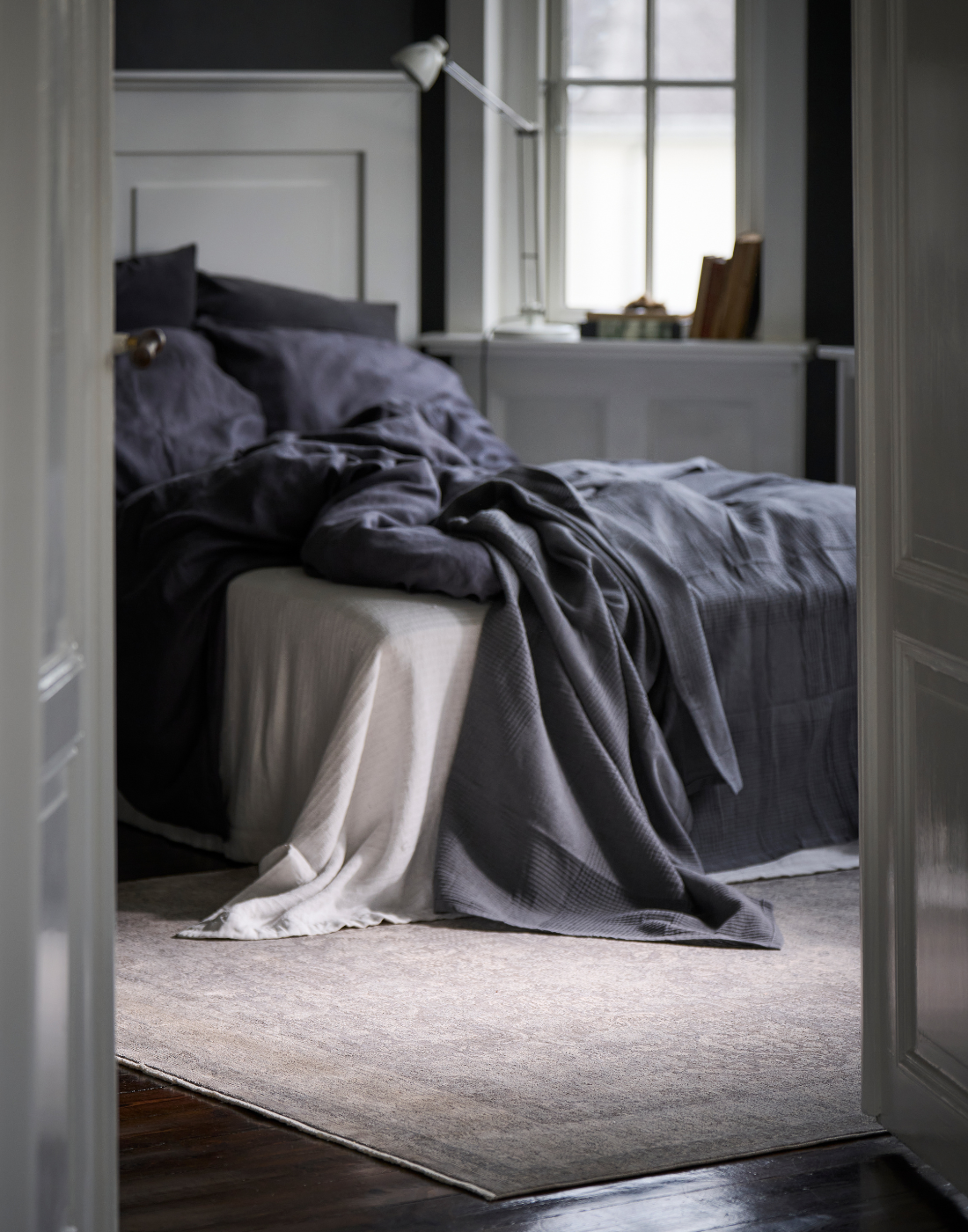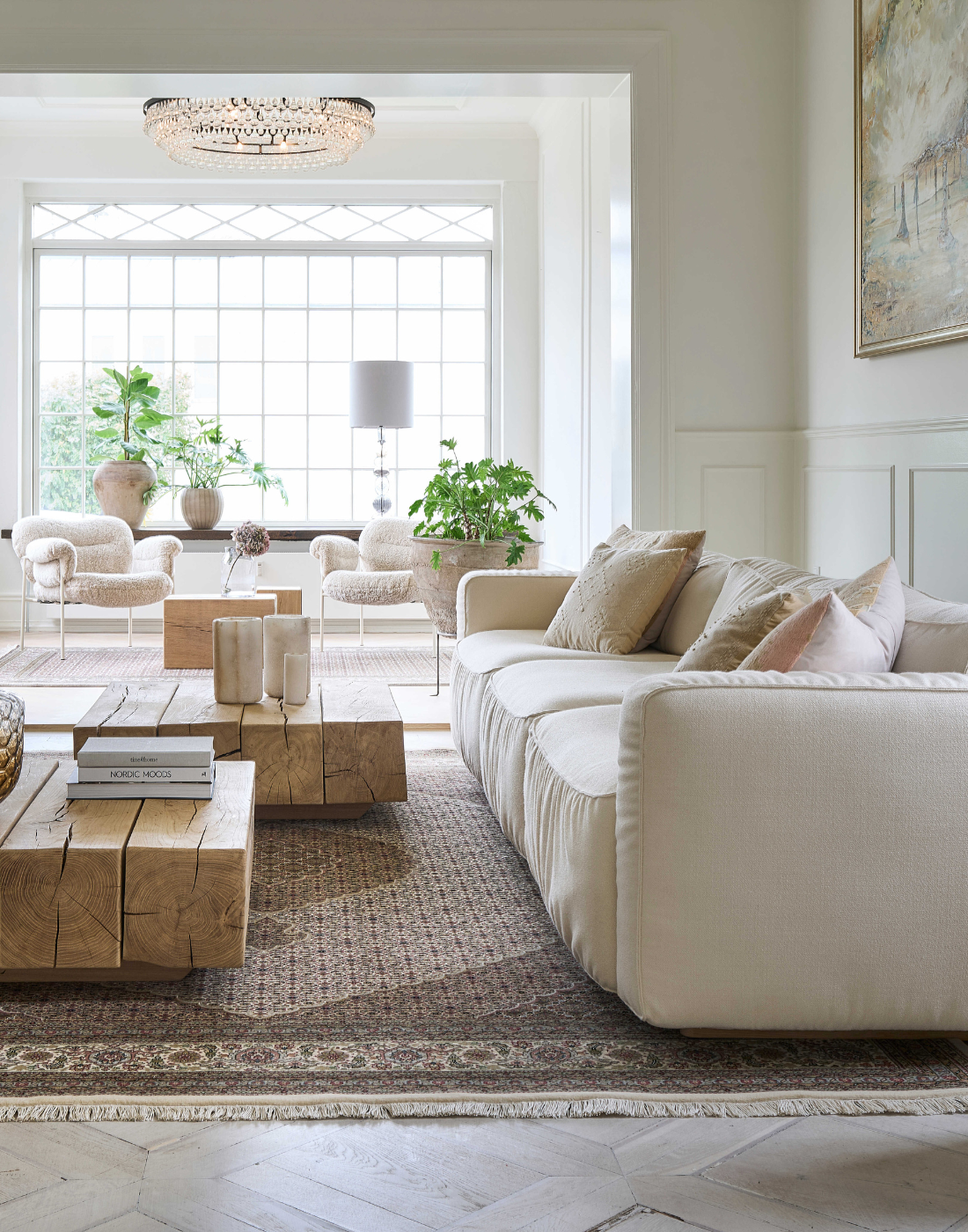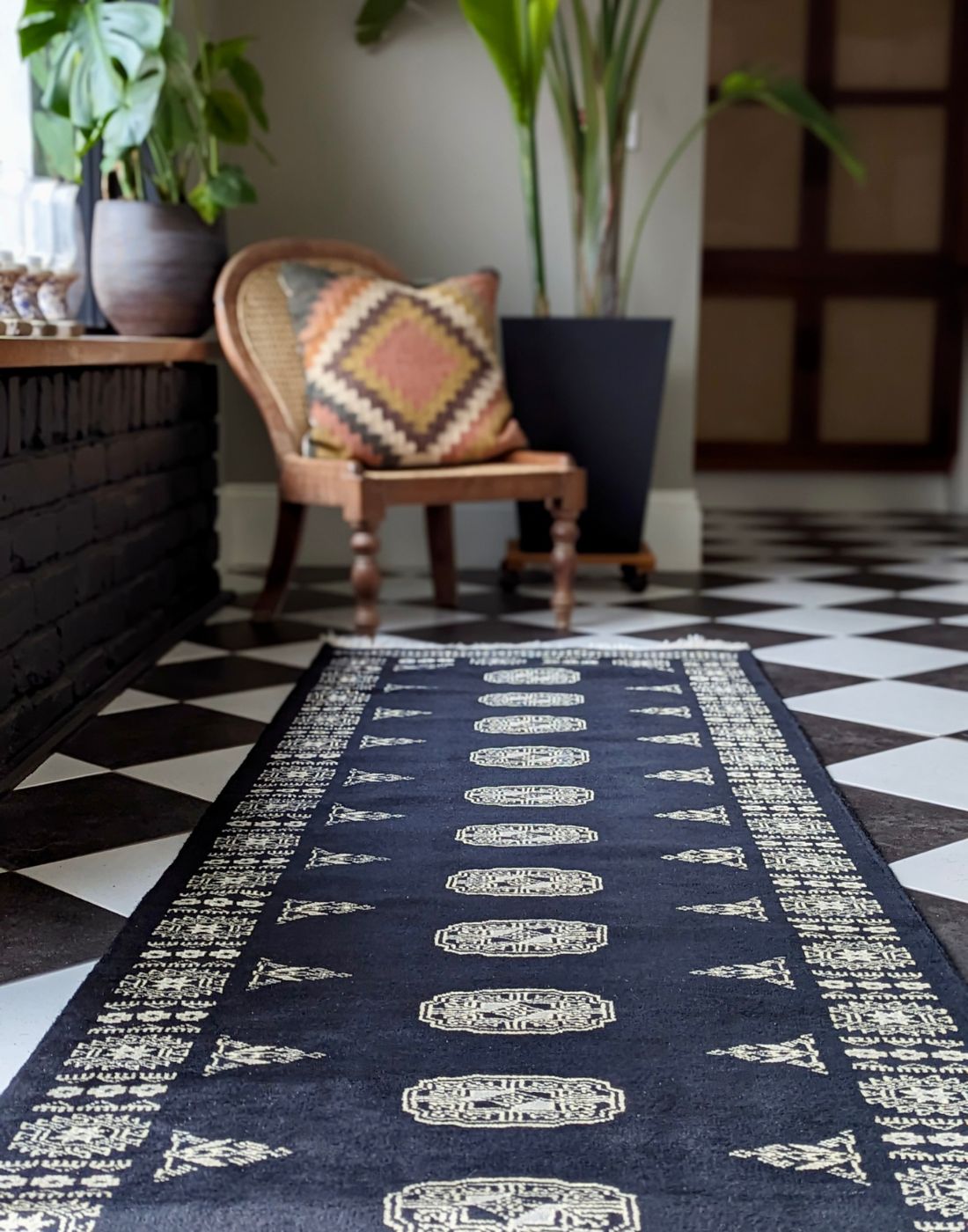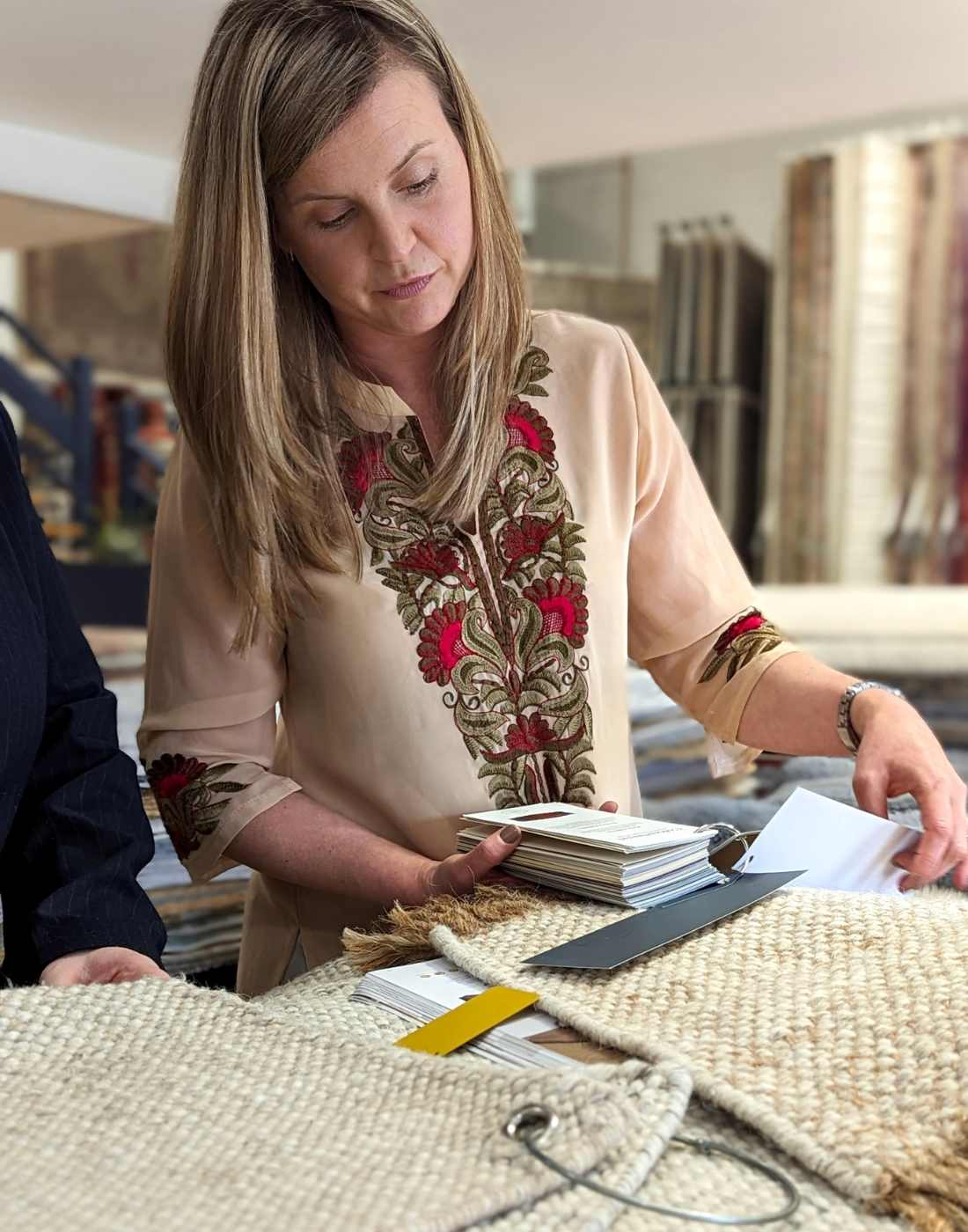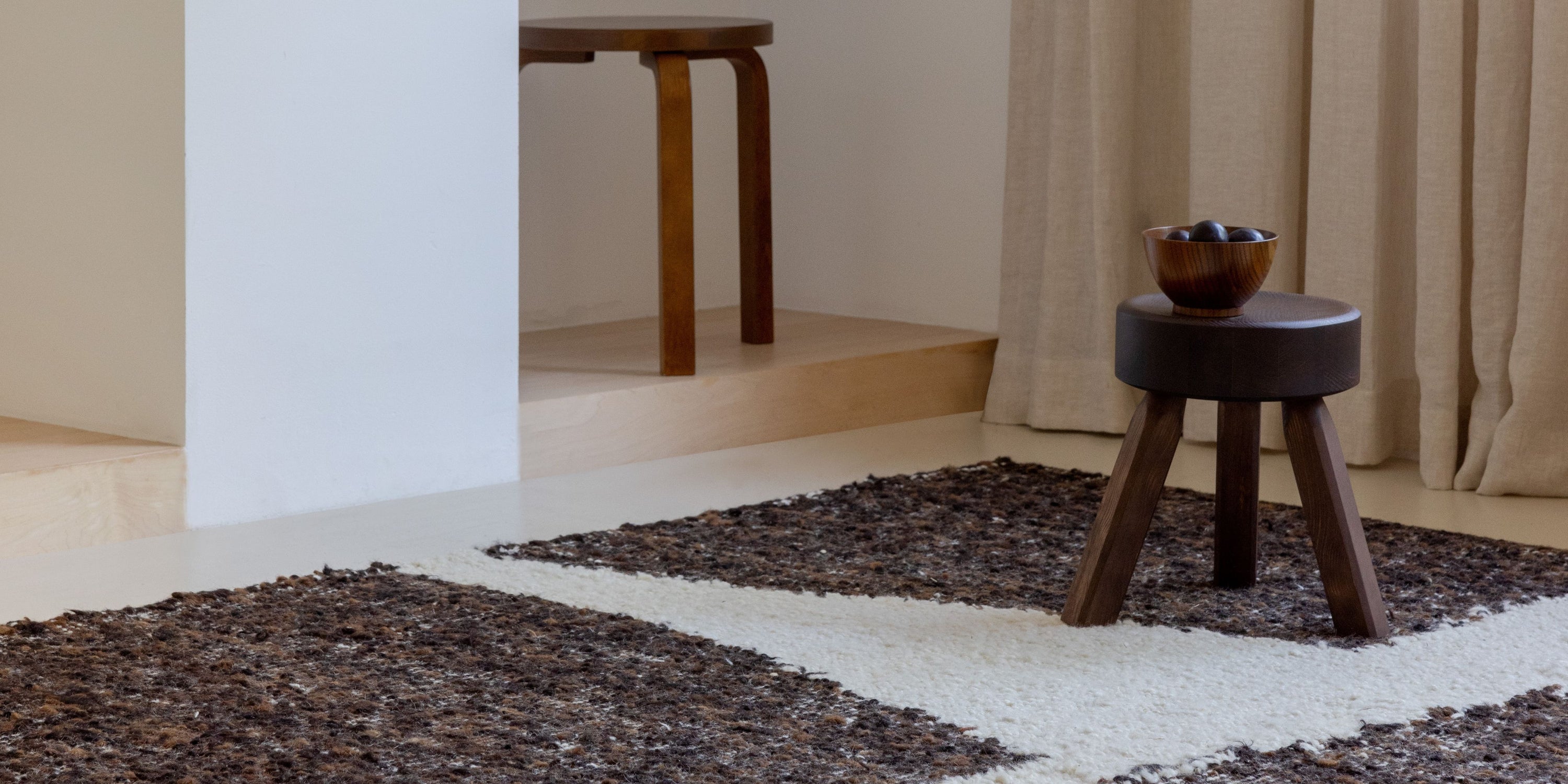Natural Materials
Natural rug materials include wool, cotton, silk, jute & sisal. These offer warmth and timeless design and are generally considered suitable for underfloor heating.

Wool Rugs
Wool rugs have long been regarded as the gold standard in rug materials, offering exceptional durability, natural stain resistance, and a luxurious feel underfoot. Wool is also a great insulator, offering a cosy, inviting atmosphere. Plus the material’s natural elasticity helps wool rugs maintain their shape and structure even in high-traffic areas. As a result, wool rugs are ideally suited to both residential and commercial spaces.
The Craftsmanship Behind Wool Rugs
Handknotted Rugs
Handknotting is the pinnacle of rug craftsmanship. This is a skilled and time intensive process whereby each knot is tied by hand to create the design of the rug. Knot counts typically start at 40 knots per square inch (KPSI) and can reach up to 2,000 KPSI. Handknotted rugs are made from high quality natural materials such as wool and silk. Handspun wool is typically used, which creates a soft, textured thread that is particularly durable.
Handtufted Rugs
Handtufting is also a skilled process but typically takes less time than the handknotting process. Using a canvas stretched over a frame, weavers meticulously map out the rug's design before punching strands of wool into the canvas with a tufting gun to create the pile. A layer of latex is then applied to secure the tufts, creating a durable piece that is also soft and plush underfoot.
Handwoven and Handloomed Rugs
Handwoven and handloomed rugs involve interlacing wool fibres on a loom. Handloomed rugs often have a thicker, denser pile, providing extra texture and depth, while handwoven rugs generally feature a flatter pile. These rugs strike a balance between traditional techniques and contemporary aesthetics, offering versatility for modern interiors.
Machinetufted Rugs
The process of machine tufting is similar to that of hand tufting but only one color is usually tufted and then printed or dyed. Machine tufted rugs are often less expensive as the manufacturing process is quicker and done on a larger scale.
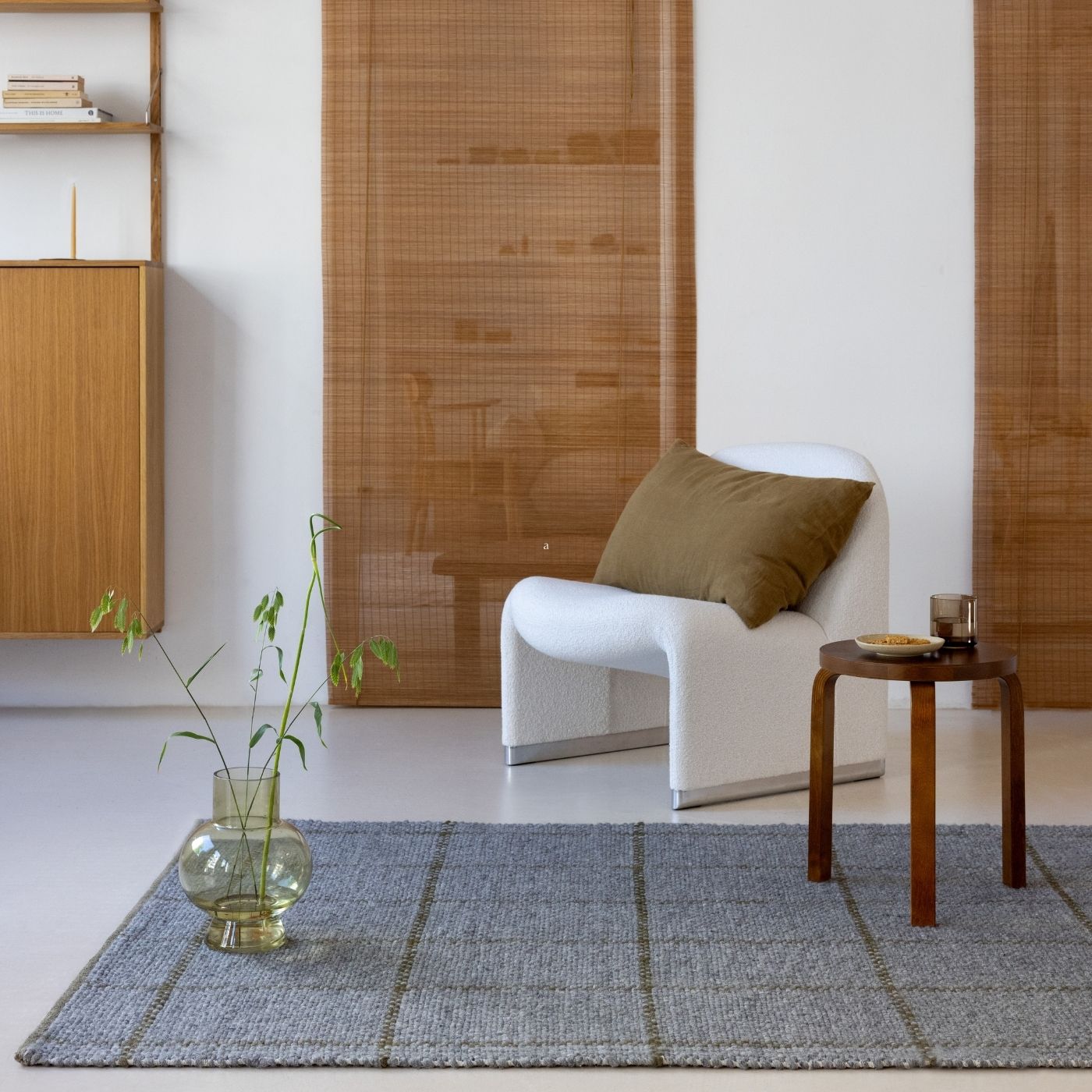
Wool Rug Placement & Care
Placement: Wool rugs are versatile and can enhance any space, from living rooms to hallways. Their natural stain resistance makes them ideal for high-traffic areas, while their insulating properties provide warmth and comfort in bedrooms or sitting rooms.
Care Tips: To keep a wool rug looking its best vacuum on a low setting no more than once a week. Avoid using vacuums with a rotating beater bar, particularly for rugs with longer fibres. Initial shedding is normal and will reduce over time. Spot clean spills with a damp white cloth and non-biological detergent.
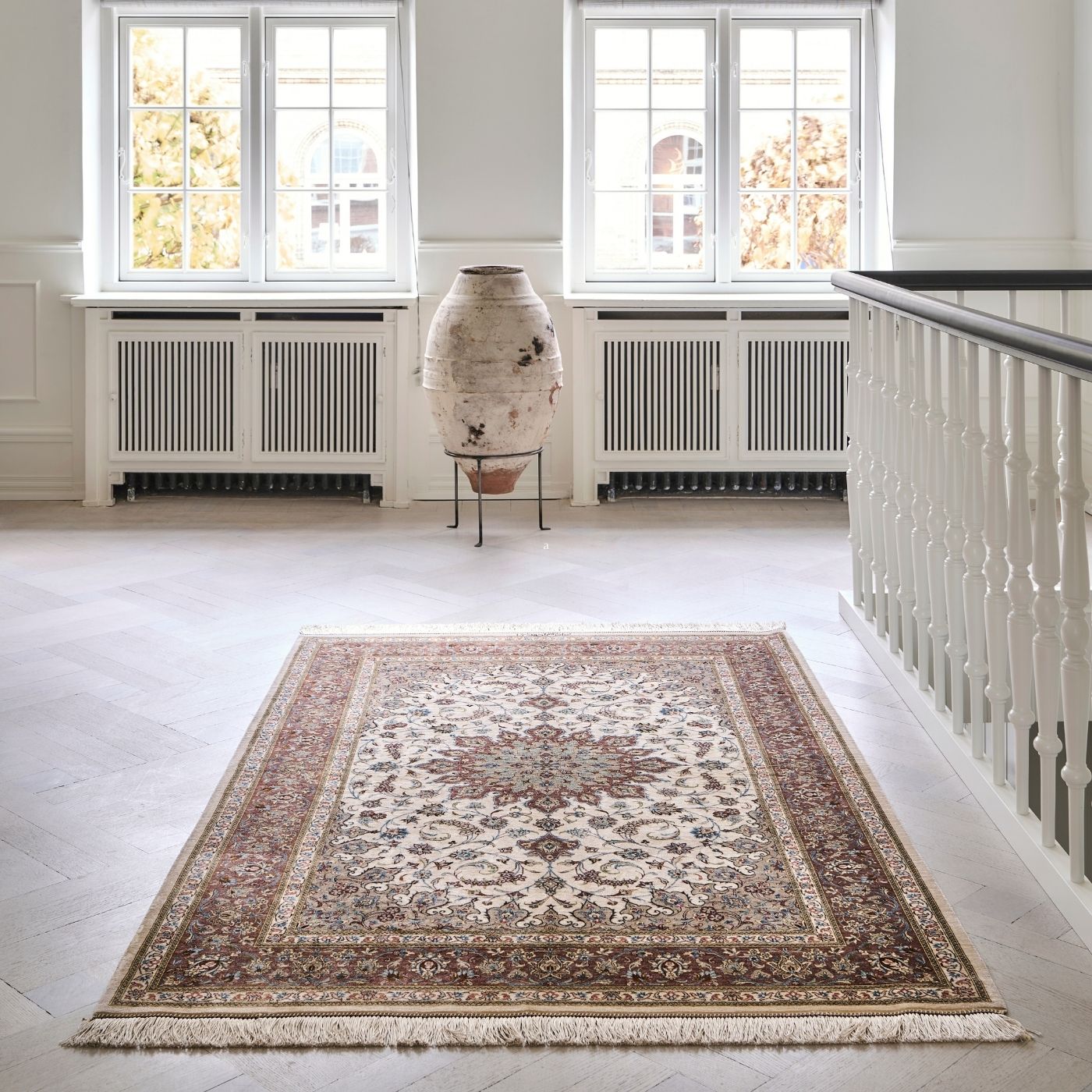
Silk Rugs
Silk rugs are synonymous with luxury. The soft, velvety pile and jewel tones add an air of elegance to any space. The delicate fibres are also incredibly fine resulting in richly intricate patterns that draw the eye.
Placement: Ideal for bedrooms or as decorative wall hangings, silk rugs should ideally be placed in low traffic areas to avoid damage.
Care Tips: Silk rugs are delicate and should be treated with care. Use a soft carpet brush in lieu of a vacuum to remove dust and debris. For spills or stains, professional cleaning is strongly recommended to protect the delicate fibres.
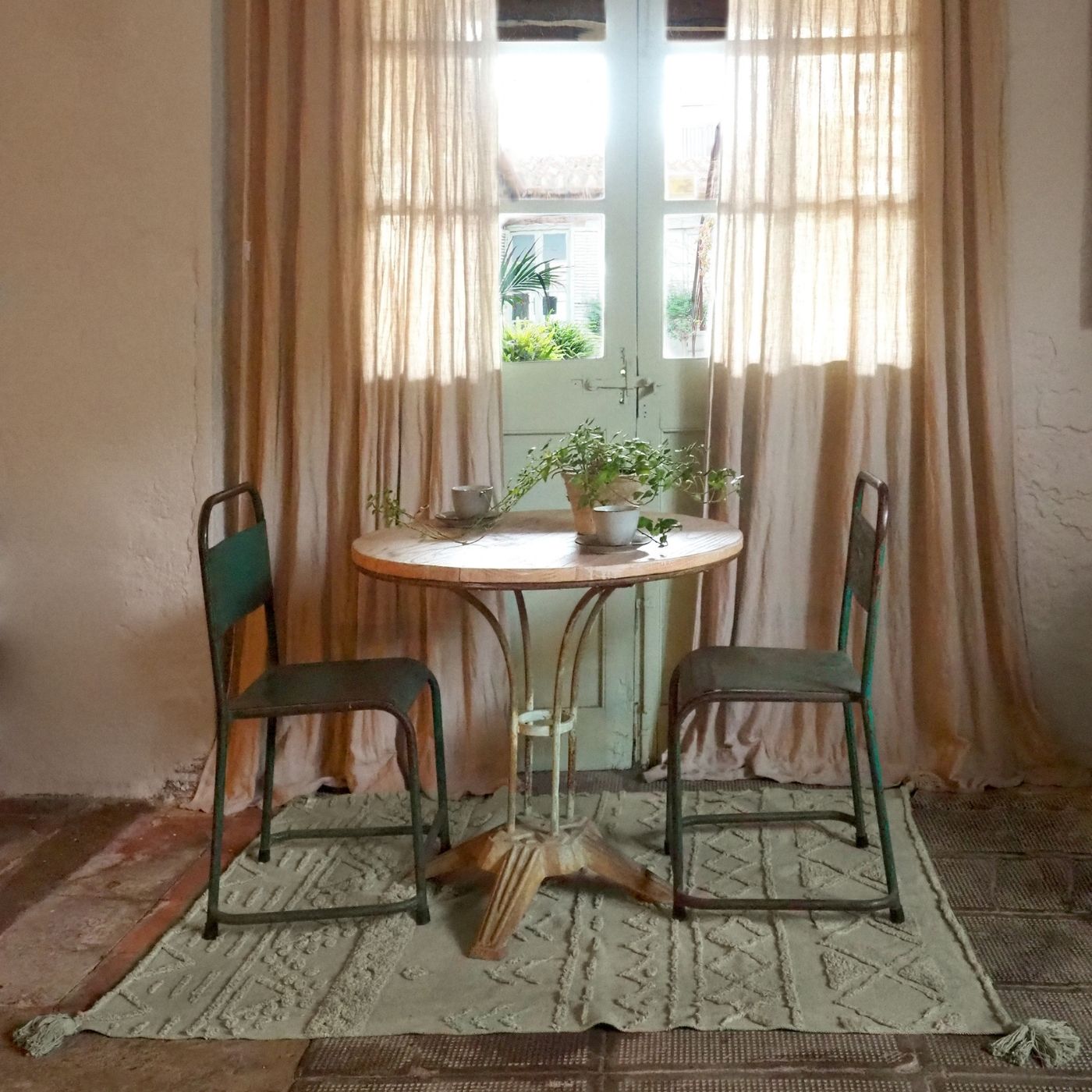
Cotton Rugs
Cotton rugs are a versatile and durable option for casual or relaxed interiors. With a flat pile that is easy to clean, they’re perfect for placement under furniture or in high-traffic areas. Their lightweight nature and simple maintenance make them a practical choice for busy households.
Placement: Cotton rugs work well in dining rooms and living rooms. The thin, durable pile makes these pieces well suited for placement under furniture.
Care Tips: You can vacuum cotton rugs weekly and shake them clean to remove dust and debris. For stains, blot with a damp white cloth and use a non-biological detergent solution.
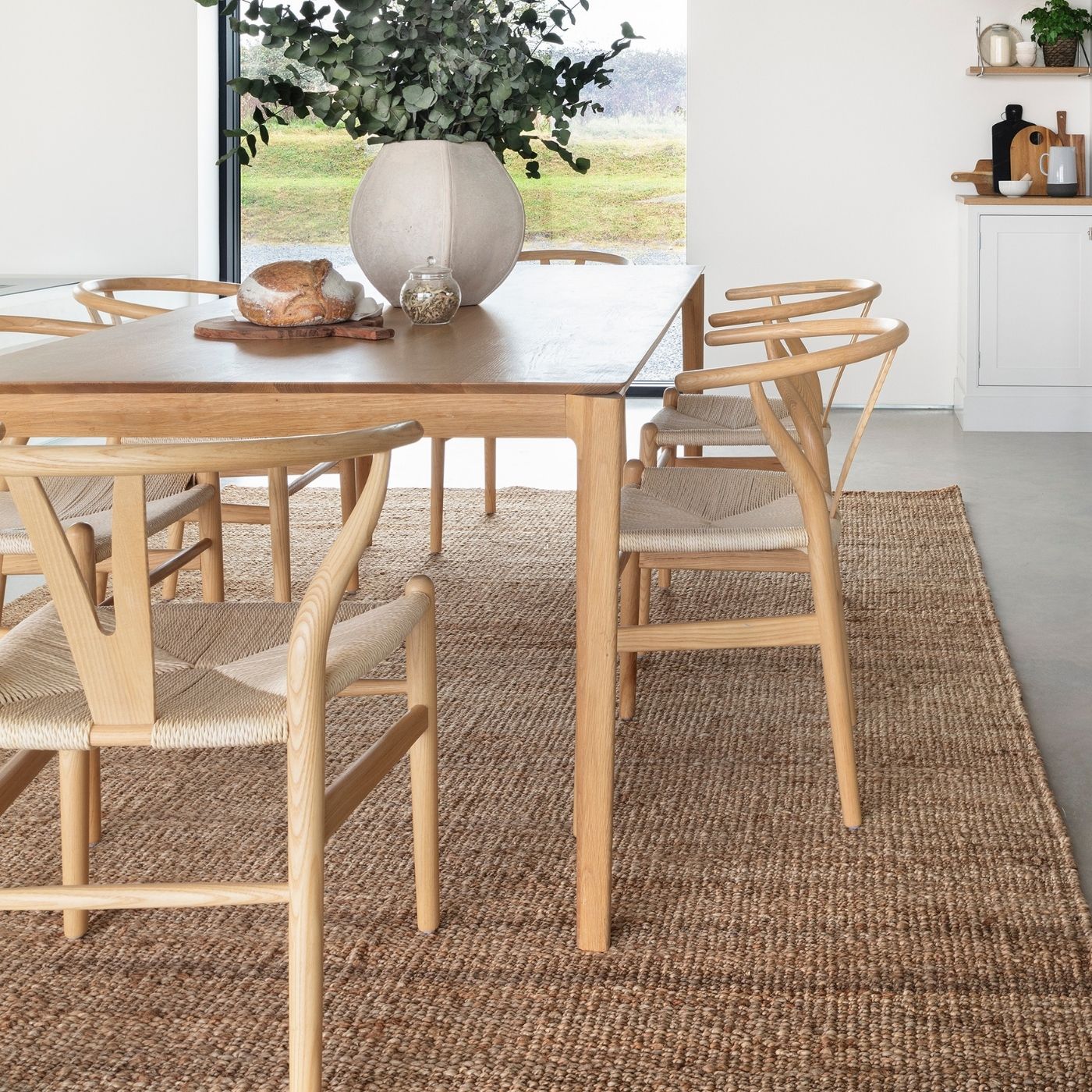
Jute and Sisal Rugs
Jute and sisal rugs are woven from the natural fibres of the jute plant and Agave Sisalana plant, respectively. These rugs have a rustic, woven texture that that adds warmth and texture to any space. Their warm, earthy tones make them a versatile choice for a variety of interior styles.
Placement: These rugs are best suited to living and dining areas however, they should not be placed in damp or humid spaces such as kitchens or bathrooms, as the fibres can be prone to moisture damage.
Care Tips: These rugs can be brushed or shaken clean to remove any dirt. For spills, blot immediately with a dry cloth to prevent staining. Avoid water-based cleaning methods, as these materials are not moisture-resistant.
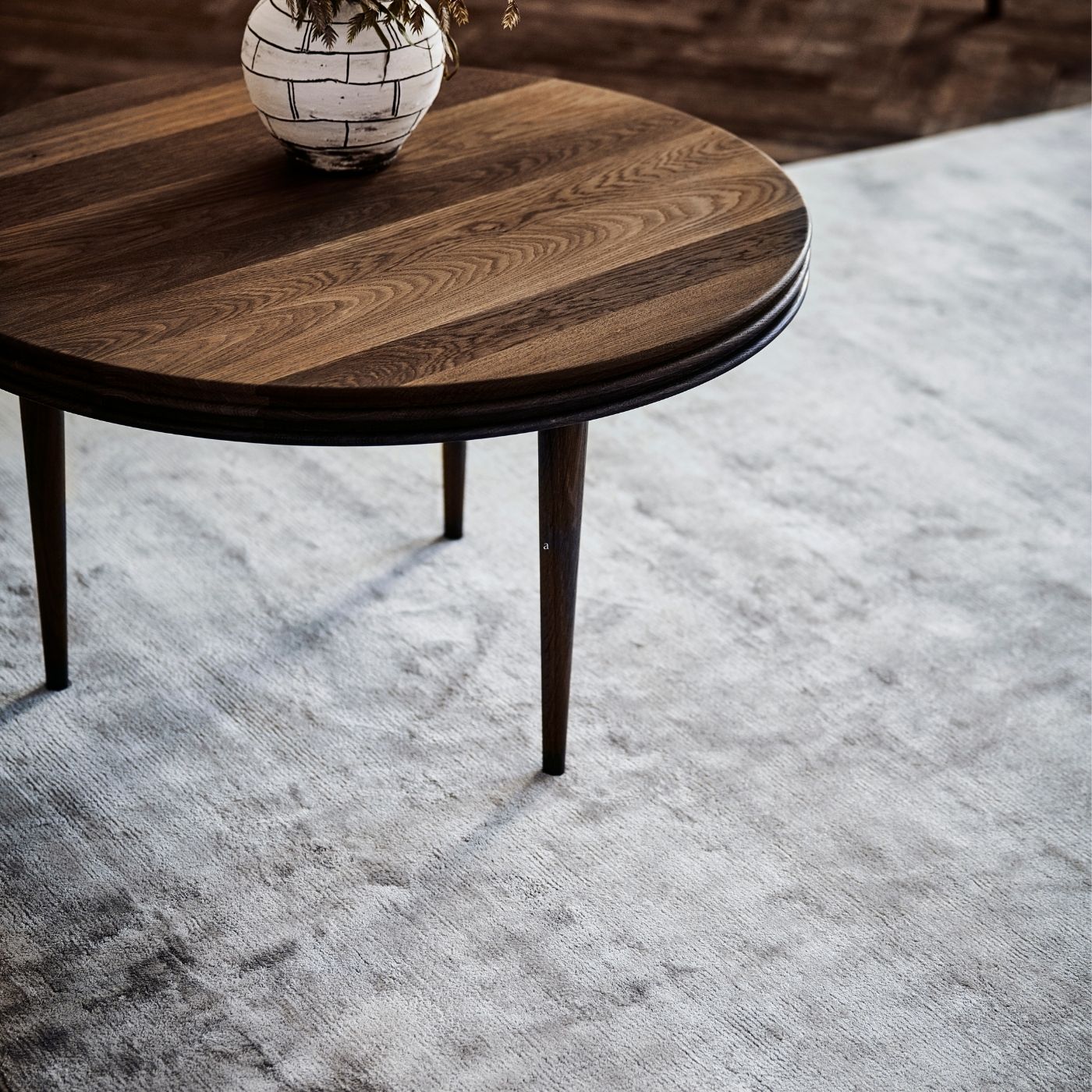
Viscose and Bamboo Silk
Viscose rugs, also known as bamboo silk rugs, offer a silk-like texture adding a touch of luxury to any room. These rugs are soft underfoot and have a slight sheen. Viscose is also sometimes incorporated into wool rug designs to highlight specific design elements.
Placement: Viscose and bamboo silk fibres are quite delicate and as a result these rugs are best placed in low-traffic areas such as bedrooms.
Care Tips: Viscose rugs can stain when exposed to moisture and therefore should be professionally cleaned in the event of spills. Avoid using a vacuum with a rotating beater bar; opt instead for a carpet brush to gently remove dust and dirt.
Longbarn Materials
Offering timeless luxury, Longbarn custom rugs are crafted from premium materials including mohair, eucalyptus yarn and and New Zealand wool. These rugs are exceptionally durable and can be made to your exact size and colour requirements, making them the perfect choice for commercial projects and hotels.
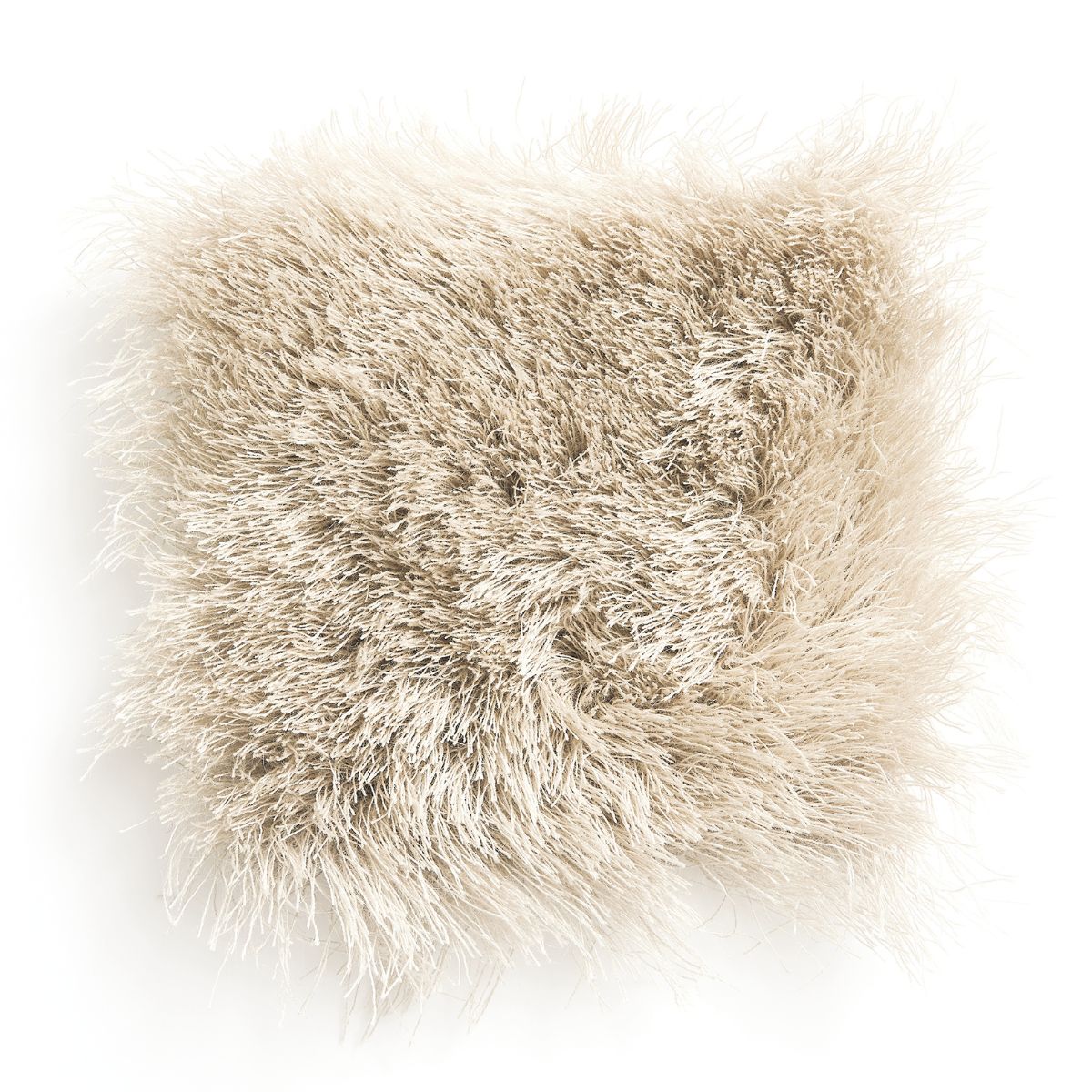
Mohair
Mohair is luxuriously soft to touch and is often considered to be the most durable rug material.
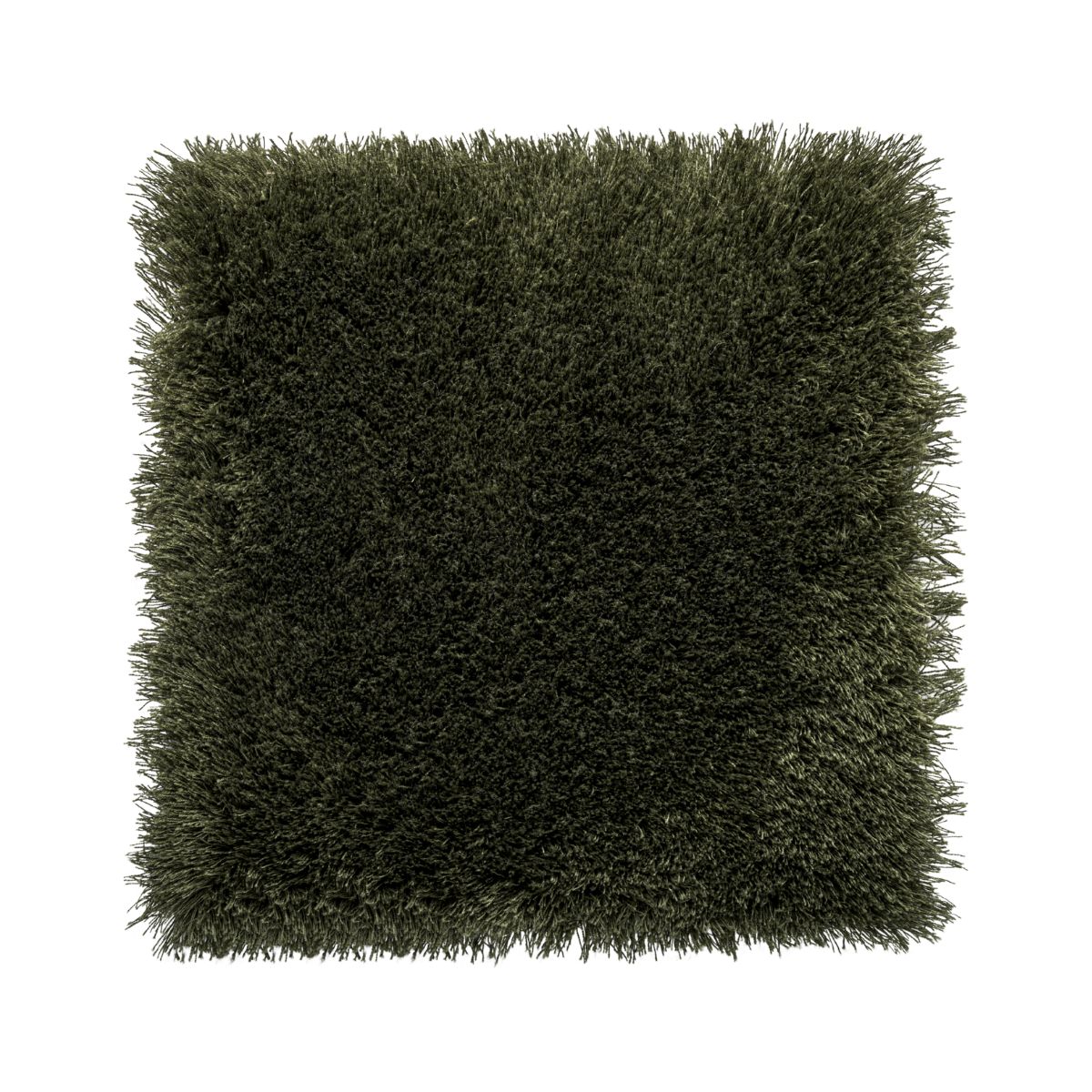
New Zealand Wool
Pure New Zealand wool offers a thick, cosy pile that maintains its colour and softness over time. This type of wool is particularly durable and also boasts a natural stain resistance.
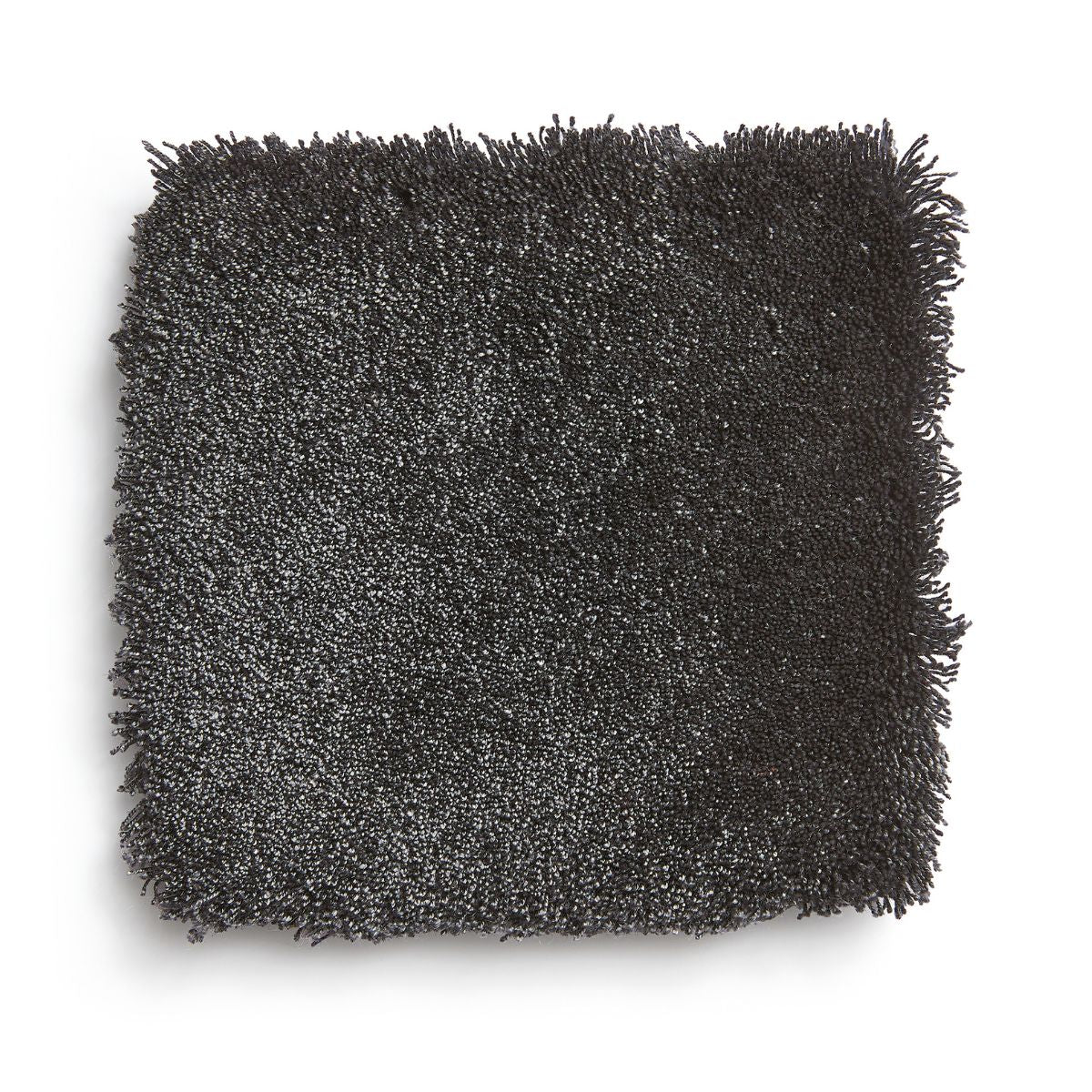
Eucalyptus Yarn
Eucalyptus yarn is made from eucalyptus trees with minimal water and pesticide use. This material is known for its soft texture, subtle sheen and impressive durability, making it ideal for high-traffic areas.
Synthetic Materials
Polyester Rugs & Polypropylene Rugs
Polyester and polypropylene rugs are practical, often budget-friendly options that offer versatility and durability. Available in a wide range of styles, from vintage patterns to modern abstracts, they provide a stylish way to enhance your space.
Placement: These rugs are well-suited to high-traffic areas such as hallways, kitchens and dining rooms as they are durable and easy to clean. Shaggy polyester rugs are better suited to spaces like living rooms where comfort is a priority.
Care Tips: These rugs can be vacuumed regularly and spot cleaned with a damp white cloth. Avoid using a vacuum with a beater bar, particularly for shaggy polyester rugs, as this can pull up the rug fibres.
PET (Recycled Polyester) Rugs
PET rugs are made from recycled materials and are typically designed for outdoor use due to their durable, flat pile.
Placement: Perfect for outdoor areas such as patios or balconies, PET rugs have a thin pile that can withstand wear. Indoors, they work well in kitchens or utility rooms where practicality is essential.
Care Tips: PET rugs can be cleaned and wiped down with with a damp cloth. You can also vacuum your PET rug weekly to keep it looking fresh.
